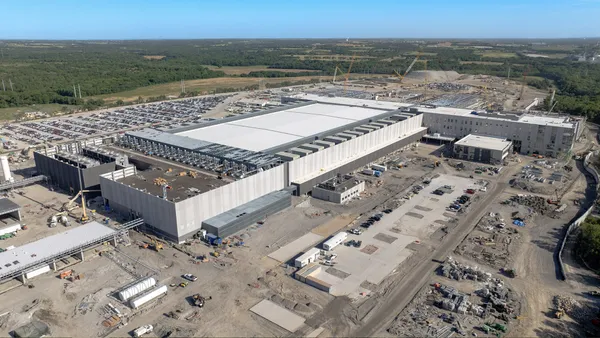Dive Brief:
- The value of November nonresidential construction starts plummeted to $23.4 billion, a 22.2% dive from October’s mark and a significant departure from the standard seasonal October-November declines of 2%.
- Month to month, the primary categories of institutional (-23%), heavy engineering (-31.1%) and commercial (-6.3%) were all down, as was smaller volume industrial, which came in at -52.4%.
- Year over year, November 2016 starts were down 8.5%, with heavy engineering (-18.1%), institutional (-7.7%) and commercial (-1.6%) contributing to the downturn despite an institutional boost of 64.1%. On a year-to-date basis, however, starts were up 8% when compared to January 2015 through November 2015, with industrial being the only category in the negative (-18%)
Dive Insight:
On the employment front last month, ConstructConnect reported that from November 2015 to November 2016, total jobs in architectural and engineering services — a leading indicator of construction activity – were up 2.1%, bringing positions in that sector close to their February 2008 high. U.S. construction jobs increased by 19,000 in November. While year-over-year employment was up 2.4%, handily beating the nation's overall job growth rate, industry job increases were well below December 2014’s figure of 6.1%.
Florida was home to two of ConstructConnect's 10 largest project starts in November, while the rest were scattered across the country. The top seven projects in dollar value were the Oceanwide Center — San Francisco ($1.6 billion); Kapiolani Residence — Honolulu ($190 million); Druid Lake Finished Water Tanks — Baltimore ($134 million); Tract 54 at Lely Resort Apartments — Naples, FL ($120 million); Phoenix Sky Harbor International Airport Phase 2 – Terminal 3 South Concourse — Phoenix ($116 million); Armstrong High School Demolition — Richmond, VA ($110 million); and The Mall at Miami World Center — Miami ($100 million).
Last month, ConstructConnect revised its 2016 industrywide start projections downward from 7.9% to 6.2% but increased its 2017 forecast from 6.2% to 6.8%. The construction information and technology company said the reason for the lowering of 2016's numbers was that residential had been an underperformer due to the uncertainty around the November presidential election. However, it expects the sector to bounce back at twice its normal rate through 2020. Affirming the relatively strong year-to-date numbers in November's nonresidential starts report, ConstructConnect also found that office building, parking garage and healthcare construction was stronger than anticipated in the third quarter.











